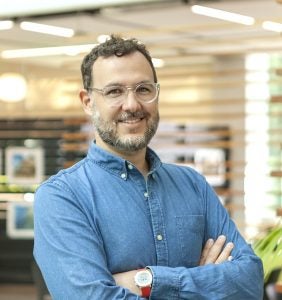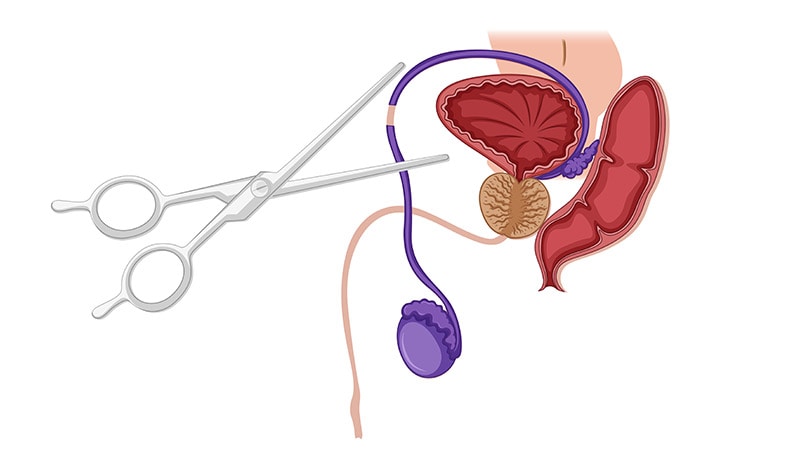Report on the Appointment of Vice Chancellor for Human Health Sciences at UC Davis
1.0 Executive Appointment Details
An official appointment has been made for the position of Vice Chancellor of Human Health Sciences at UC Davis Health. The key details are as follows:
- Appointee: Dr. Mark I. Rosenblatt
- Position: Vice Chancellor of Human Health Sciences
- Oversight: UC Davis Health, including its hospitals, schools of health, and primary care clinics.
- Effective Date: January 19, 2026
2.0 Appointee Professional Profile
Dr. Rosenblatt brings extensive experience from his leadership roles at the University of Illinois Chicago.
2.1 Current and Previous Positions
- Executive Dean, University of Illinois College of Medicine
- Chief Executive Officer, University of Illinois Hospital and Clinics
- Distinguished Professor of Ophthalmology and Visual Sciences
- Head of the Department of Ophthalmology and Visual Sciences
- Director of the Corneal Regenerative Medicine Laboratory
- Vice Chair of the Department of Ophthalmology, Weill Cornell Medical College
2.2 Academic and Research Credentials
- MD/Ph.D. in biochemistry, cell and molecular biology from the University of Miami Miller School of Medicine.
- MBA from New York University.
- MHA from the University of Illinois Chicago School of Public Health.
- Ophthalmology residency and fellowship at Massachusetts Eye and Ear Infirmary/Harvard Medical School.
- Internationally recognized clinician-scientist with research funded by the National Institutes of Health and the Department of Defense.
- Author of over 225 original manuscripts, review articles, book chapters, and abstracts.
3.0 Contribution to Sustainable Development Goals (SDGs)
The appointment and the ongoing mission of UC Davis Health under this new leadership directly support several United Nations Sustainable Development Goals (SDGs).
3.1 SDG 3: Good Health and Well-being
The core function of the role is to advance public health and well-being through direct oversight of a comprehensive health system.
- Management of three hospitals and 17 primary care clinics serving 6 million residents across 33 counties.
- Advancement of specialized care through the UC Davis Comprehensive Cancer Center and the MIND Institute.
- Promotion of safe and effective treatments via more than 1,000 annual health-based research studies.
3.2 SDG 4: Quality Education
The position is integral to fostering high-quality education for future healthcare professionals.
- Leadership of the nationally ranked UC Davis School of Medicine and the Betty Irene Moore School of Nursing.
- Dr. Rosenblatt’s background includes directing a Medical Scientist Training Program, aligning with the goal of developing skilled professionals.
3.3 SDG 8: Decent Work and Economic Growth
UC Davis Health serves as a significant regional economic engine.
- As the second-largest employer in Sacramento County, the institution provides over 20,000 jobs.
- The health system’s annual operating budget of over $4.5 billion contributes substantially to regional economic stability and growth.
3.4 SDG 9: Industry, Innovation, and Infrastructure
The role promotes innovation and strengthens critical health infrastructure.
- Dr. Rosenblatt’s research in corneal nerve regeneration and nanoengineered biomaterials exemplifies a commitment to medical innovation.
- The health system’s extensive research activities and facilities represent a robust infrastructure for advancing health sciences.
4.0 Strategic Vision and Institutional Impact
The appointment is positioned to enhance UC Davis Health’s role as a model for integrated academic health systems. The stated vision emphasizes a patient-centered approach that leverages interdisciplinary collaboration across the university. This strategy aims to advance health outcomes for Northern and Central California, aligning with the long-term objectives of SDG 3 by transforming lives through a deeply committed clinical mission, innovative research, and world-class education programs.
SDGs Addressed in the Article
SDG 3: Good Health and Well-being
- The article is centered on UC Davis Health, a major academic health system. It discusses the provision of healthcare services through its hospitals (UC Davis Medical Center, UC Davis Children’s Hospital, UC Davis Rehabilitation Hospital) and primary care clinics to a population of 6 million residents. It also highlights specialized care and research in areas like cancer and neurodevelopmental conditions, directly contributing to ensuring healthy lives and promoting well-being.
SDG 4: Quality Education
- The text explicitly mentions the UC Davis School of Medicine and the Betty Irene Moore School of Nursing. These institutions are dedicated to providing tertiary education and training for future healthcare professionals, which aligns with the goal of ensuring inclusive and equitable quality education.
SDG 8: Decent Work and Economic Growth
- The article states that UC Davis Health “employs more than 20,000 people, making it the second-largest employer in Sacramento County.” This directly relates to the goal of promoting sustained, inclusive, and sustainable economic growth, full and productive employment, and decent work for all.
SDG 9: Industry, Innovation, and Infrastructure
- A significant portion of the article is dedicated to research and innovation. It mentions that UC Davis Health “conducts more than 1,000 health-based research studies each year” and highlights Dr. Rosenblatt’s own research in “corneal peripheral nerve regeneration” and “nanoengineered biomaterials.” This focus on scientific research and advancing treatments supports the goal of building resilient infrastructure and fostering innovation.
SDG 17: Partnerships for the Goals
- The article implies strong partnerships. The research mentioned is funded by various entities including the “National Institutes of Health, the Department of Defense, Research to Prevent Blindness, the Falk Family Foundation and the Tri-Institutional Stem Cell Initiative.” The new leader also expresses excitement to work with “community partners.” This collaboration between public institutions, government bodies, and private foundations to achieve health and research objectives is a core aspect of this goal.
Specific SDG Targets Identified
SDG 3: Good Health and Well-being
- Target 3.4: By 2030, reduce by one third premature mortality from non-communicable diseases through prevention and treatment and promote mental health and well-being. The mention of the “UC Davis Comprehensive Cancer Center” and the “MIND Institute,” which focuses on “autism and other neurodevelopmental conditions,” directly addresses the treatment of non-communicable and neurodevelopmental diseases.
- Target 3.8: Achieve universal health coverage, including financial risk protection, access to quality essential health-care services… The article describes UC Davis Health’s extensive network, including “three hospitals” and “17 primary care clinics serving communities across Northern California,” which provides access to quality healthcare for a large population.
- Target 3.c: Substantially increase health financing and the recruitment, training, development and retention of the health workforce… The focus on the “UC Davis School of Medicine and Betty Irene Moore School of Nursing” relates to the training and development of the health workforce.
SDG 4: Quality Education
- Target 4.4: By 2030, substantially increase the number of youth and adults who have relevant skills, including technical and vocational skills, for employment, decent work and entrepreneurship. The medical and nursing schools provide students with highly specialized technical and vocational skills required for employment in the healthcare sector.
SDG 8: Decent Work and Economic Growth
- Target 8.5: By 2030, achieve full and productive employment and decent work for all women and men… The article’s statement that UC Davis Health “employs more than 20,000 people” is a direct contribution to this target within its regional context.
SDG 9: Industry, Innovation, and Infrastructure
- Target 9.5: Enhance scientific research, upgrade the technological capabilities of industrial sectors in all countries… and substantially increasing the number of research and development workers… The article’s emphasis on conducting “more than 1,000 health-based research studies each year,” Dr. Rosenblatt’s extensive publication record (“over 225 original manuscripts”), and research funding from national bodies directly align with enhancing scientific research and development.
SDG 17: Partnerships for the Goals
- Target 17.17: Encourage and promote effective public, public-private and civil society partnerships… The funding sources for research, which include public (NIH, Department of Defense) and private (Falk Family Foundation) entities, exemplify a multi-stakeholder partnership to advance scientific goals.
Indicators for Measuring Progress
Implied Indicators
- Number of patients served by the health system: The article mentions a service area covering “6 million residents,” which can be used as a proxy for access to healthcare services (Target 3.8).
- Number of healthcare professionals graduated: The existence of the School of Medicine and School of Nursing implies an output of trained professionals, an indicator for progress towards strengthening the health workforce (Target 3.c) and providing relevant job skills (Target 4.4).
- Number of people employed: The figure of “more than 20,000 people” employed is a direct indicator for job creation (Target 8.5).
- Volume of research and development: The “1,000 health-based research studies each year” and “over 225 original manuscripts” published by the incoming leader are direct indicators of R&D activity (Target 9.5).
- Amount of research funding: The mention of funding from the “National Institutes of Health, the Department of Defense, Research to Prevent Blindness, the Falk Family Foundation” serves as a financial indicator for investment in research and innovation (Target 9.5).
Summary Table of SDGs, Targets, and Indicators
| SDGs | Targets | Indicators (Implied from Article) |
|---|---|---|
| SDG 3: Good Health and Well-being | 3.4 (Non-communicable diseases), 3.8 (Health coverage), 3.c (Health workforce) | Number of specialized centers (Cancer, MIND Institute); Size of service area population (6 million residents); Number of hospitals (3) and clinics (17) |
| SDG 4: Quality Education | 4.4 (Skills for employment) | Number of health-focused schools (School of Medicine, School of Nursing); Number of students graduated with medical/nursing skills |
| SDG 8: Decent Work and Economic Growth | 8.5 (Full and productive employment) | Total number of employees (over 20,000) |
| SDG 9: Industry, Innovation, and Infrastructure | 9.5 (Enhance scientific research) | Number of research studies conducted annually (over 1,000); Amount of research funding received; Number of scientific publications |
| SDG 17: Partnerships for the Goals | 17.17 (Public, public-private and civil society partnerships) | Number and diversity of funding partners (NIH, DoD, Falk Family Foundation); Mention of collaboration with “community partners” |
Source: ucdavis.edu







